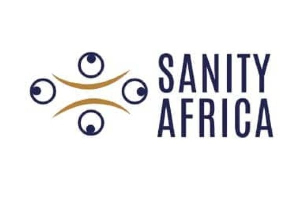"Inward private remittances including inward transfers by embassies, non-governmental organization and non-residents abroad through the banks and finance companies totalled 252.2 million dollars for January and February.
"This shows a 25 per cent increase over the amount transferred through the same sources for the same period last year," Dr Paul Acquah, Governor of the Bank of Ghana said on Wednesday.
Dr Acquah who speaking at a Press conference in Accra said the foreign exchange market had been recording buoyant sessions with reduced volatility since the last meeting of the Monetary Policy Committee (MPC).
The Governor, who is the Chairman of the MPC, said purchases on the inter-bank foreign exchange market by deposit money banks and forex bureaux for January and February was 171.7 million dollars while sales totalled 183 million dollars."
The amounts represent significant increases over the levels close to 120.0 million dollars posted over the same period in 2002.
In the inter-bank market, the cedi recorded a cumulative depreciation of 1.9 per cent against the US dollar from March 20, 2003.
Against the Euro, however, the cedi lost more grounds as it depreciated by 8.8 per cent over the same period with seven percentage points in January.
"In that month, the US dollars similarly depreciated by 4.1 per cent against the Euro on the international financial markets," Dr Acquah noted.
Gross International reserves on the whole declined from 640.04 million dollars at the end of December 2002 to some 603.6 million dollars at the end of February 2003, which is equivalent to 2.3 months of projected imports.
Interest rates also continued to move with a narrow band during the month of February and edged up from 22.06 per cent in January to an average of 23.5 per cent narrowing the spread below the BOG Prime Rate.
The 91-day Treasury bill interest rate increased from 26.62 per cent in December 2002 to 27.24 per cent by February 2003.
Commercial Bank base rates were fixed within 28 per cent and 30 per cent.
Under the period of review, there was a shift in market preference in favour of short dated securities between December 2002 and February 2003.
Foreign currency deposits increased from 423.19 million at the end of December 2002 to 447.86 million dollars by the end of January 2003.
Giving the outlook for inflation, Dr Acquah said it was the stance of financial policies especially the execution of the budget for 2003 that would shape the underlying price pressures in the economy.
"With disciplined price setting behaviour and moderation in wage settlements in the current round of negotiations, inflationary expectations should realign with macroeconomic fundamentals."
Dr Acquah said consumer price inflation should begin to ease towards the desired single digit over the coming 12 months.
He said external payments outlook for this year would be underlined by the cyclical high cocoa prices and firm gold prices.
The main source of uncertainty surrounds the aftermath of the Iraq war and geo-political tensions and their implications especially for oil prices and movements in the international currency market.
Total exports for the year is projected to grow by 10 per cent to an estimated 2,310.0 million dollars, while imports are expected to increase by 16 per cent to 3,156.3 million dollars.
He said an important downside risk in the macro financial outlook lay in the financing of the budget.
"The projected level of financing is heavily dependent on donor inflows, albeit at a pace and timing that is normally uneven and uncertain, but good treasury management and better synchronization of budgetary spending and financing flows, especially from the pool of donor funds but also from divestiture proceeds should minimise the risks to the public sector domestic borrowing programme."
He said the prudently set fiscal stance when pursued vigorously should set the economy firmly on a disinflation path.
Business News of Thursday, 27 March 2003
Source: .












